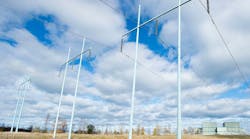I recall sitting at my desk at Central Vermont Public Service in 1991, a newly minted vice president from outside of the utility business brought in to expand corporate thinking on industry change. Enron and California’s deregulation had yet to happen. It was six years before the formation of the California Independent System Operator (ISO), six years before PJM Interconnection would become an ISO and 10 years before MISO entered the mix. Coal produced 50% of all power, nuclear 21%, natural gas 10% and hydropower 15%. Utilities were vertically integrated. While there was some wind on the system, solar was not a measurable contributor. Customer choice was absent. And the smartest meter available allowed for off-peak water heating.
It was seven years before the Wall Street Journal started publishing the price of electricity at the California Oregon Border (COB), a move that would mark the first time the public could see the wholesale price of electricity. There, displayed alongside pork bellies and petroleum, were electrons.
While the pressure to move to customer choice and to deregulate were still both several years away, drum beats of change were evident in the COB price publishing. The exposure of wholesale prices meant even consumers could see baseline costs for obtaining power.
For its part in 1991, the Western Area Power Administration (WAPA) focused on supporting preference customers with federal hydropower. WAPA was in an era of large-scale T-Line construction and would not become an open access transmission provider until 1998. Actions such as FERC Order 1000 were far away, Order 888 just a few years hence.
How our world has changed. The advent of markets across the U.S. — necessitated by choice in some regions and by pressure in others — created wholesale change in utility functions and the ability (or desire) to remain vertically integrated, and shifted economic bearings after more than 100 years of operations. Renewable portfolio standards, increased amounts of natural gas and the reduction of coal production require a different way of operating and managing the grid.
WAPA has moved with the industry in a variety of ways. For more than 30 years, WAPA jointly operated the Integrated System with Basin and Heartland. Roughly 50% of our California load is in the ISO. It became an open access transmission provider in 1998, continues to engage in multiple markets as a trading partner and works diligently to support the needs of its preference customers. In 2015, WAPA became the first power marketing administration (PMA) to fully join a market when it entered the Southwest Power Pool (SPP) after nearly a decade of analysis and decision making — in addition to showing a positive net benefit to customers. While WAPA operates across a wide footprint of 1.3 million sq miles, it does so in a unique fashion where each of its five regions and 10 power projects are covered under differing legislative mandates, rules and rates. This requires WAPA to work closely with its customers.
Our decision to move into SPP (and not into the California Energy Imbalance Market in 2014) was driven by careful analysis of costs and benefits by internal and independent sources. Too often only the benefits side of the market equation is analyzed where everyone is a “winner.” We believe it is critical to understand the short- and long-term impacts and costs. This requires a detailed understanding of all inputs and outputs.
For a federal PMA, the cost equation is as critical as the savings. As generally the lowest-cost provider of clean, renewable, carbon-free hydropower in the 15 states we serve and the lowest-cost transmission provider, we must guard against the temptation to have those rates negatively impacted. This is why our analysis — conducted by our internal experts and vetted by external professionals such as those from Argonne National Laboratory — requires careful examination. In fact, WAPA’s market moves go through a public process to gain public input every step of the way.
WAPA is planning ahead. We and six other utilities are part of the Mountain Western Transmission Group seeking to understand if we can obtain the benefits of a market at reasonable cost. The goal is to increase flexibility, remove rate pancaking and ensure our mission remains consistent with sound business principles. We continue to participate in the California ISO and are once again examining whether it makes sense for some part of our system to take a more active role.
Looking forward, WAPA and the industry need to understand the impacts of markets as we engage in the exciting changes we are facing as full participants, economic traders or a variation on these themes. Making decisions for uneconomic reasons or for political expediency is not in the interest of WAPA or the customers we serve. In an era of relatively low prices, it is too easy to think prices will always stay low. Recalling when I first saw the Wall Street Journal publish COB prices, I realize how easy it can be to overlook the cost of operating and maintaining a system, investing for the future and protecting the infrastructure needed to keep lights on. Whatever changes the industry faces, those basics remain the same.
Mark A. Gabriel is administrator and CEO of Western Area Power Administration

